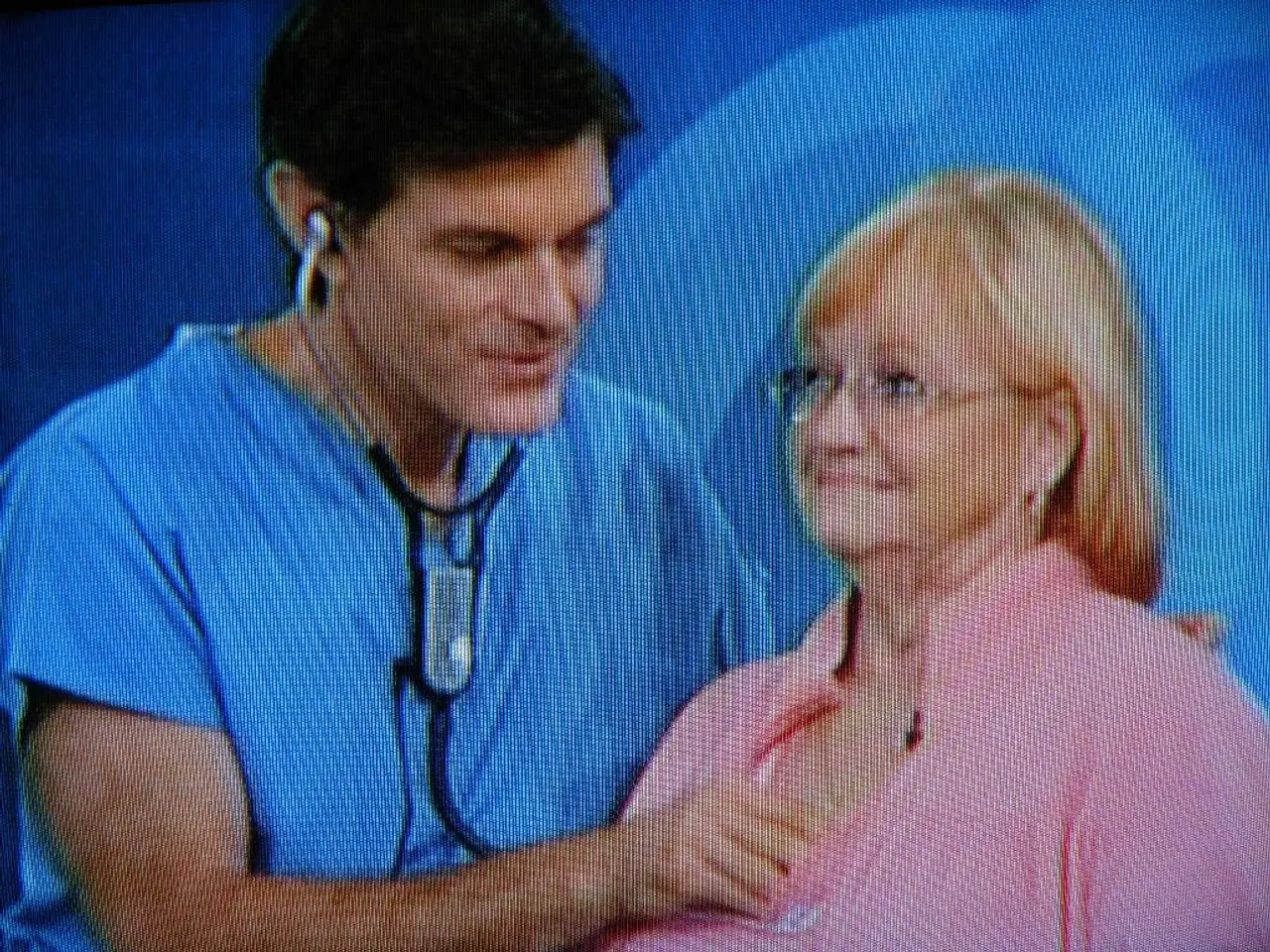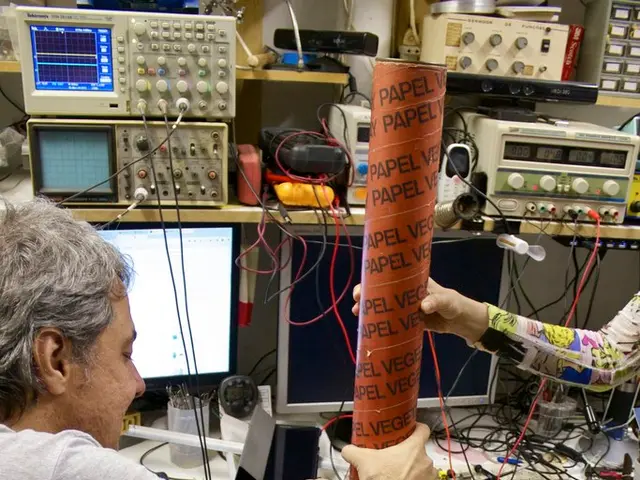Implantable device for heart rhythm control: Functions, process, potential complications, and additional details
Biventricular pacemakers are a type of heart device designed to help people with heart failure or irregular heartbeat. Unlike traditional pacemakers and defibrillators, biventricular pacemakers stimulate both ventricles of the heart simultaneously to improve heart synchronization.
Key Differences between Devices
| Device | Main Function | Chambers Stimulated | Additional Features | |-----------------------------|----------------------------------------------------------|-----------------------------------------------------|-------------------------------------------------------------| | Traditional Pacemaker | Corrects slow or irregular heart rhythms (bradycardia) | Usually right atrium or ventricle | Maintains basic heart rate, manages heart blocks | | Biventricular Pacemaker | Provides cardiac resynchronization therapy (CRT) | Both left and right ventricles simultaneously | Enhances ventricular synchrony, improves cardiac output and heart failure symptoms[1][2][4] | | Implantable Cardioverter-Defibrillator (ICD) | Detects and terminates dangerous arrhythmias (e.g., ventricular fibrillation) | Usually right ventricle | Delivers shocks or pacing to restore normal rhythm after arrhythmias[2] |
The Role of Biventricular Pacemakers
Biventricular pacemakers, part of cardiac resynchronization therapy (CRT), are implanted to improve electromechanical synchrony in patients with heart failure and ventricular conduction delays. This enhancement of the effectiveness of heart contractions and symptoms can lead to improved quality of life for those affected[1][2][4].
Preparation and Procedure
Before the surgery, a doctor will explain the benefits, risks, and possible complications. They may advise temporary medication stops and require blood tests if the person takes blood thinning medication. It is also important to avoid consuming food and liquids for at least six hours before the procedure[5].
During the procedure, a surgeon makes a small incision in the skin underneath the collarbone and passes the leads through veins into the heart chambers using X-rays for guidance[5].
Post-Procedure Care
After the procedure, a person should consider contacting a doctor if they experience signs of an infection at the incision site, dizziness, shortness of breath, feeling faint, fatigue, difficulty breathing, low blood pressure, worsening of pain around the pacemaker pocket, bleeding at the incision site that does not stop when applying pressure[5].
It is crucial to avoid driving during the recovery period following biventricular pacemaker surgery. A person's doctor can provide them with information about when they will need to attend follow-up appointments and anything else they need to do or avoid following the procedure[6].
After the procedure, a person should avoid lifting the arm on the same side as the pacemaker for approximately one week and avoid strenuous exercise or heavy lifting for at least six weeks[6].
Benefits and Risks
There is currently no information about how biventricular pacemakers affect life expectancy, but it typically prolongs a person's life by treating heart failure, which can otherwise reduce life expectancy[7].
Complications that may occur after biventricular pacemaker surgery include bleeding at the incision site, blood clots forming in the pacemaker pocket, infection in the pocket or wound site, a hole, tear, or cut into the vein, accumulation of fluid around the heart, displacement of the pacemaker leads, and collapsed lung (in rare cases)[5].
Questions and Consultations
People who are scheduled to receive a biventricular pacemaker can contact their doctor to ask any questions they may have about the benefits and risks of the procedure, what to expect before, during, and after the procedure[8].
[1] Mayo Clinic. (2021). Cardiac resynchronization therapy (CRT). Retrieved from https://www.mayoclinic.org/tests-procedures/cardiac-resynchronization-therapy/about/pac-20394642
[2] American Heart Association. (2021). Cardiac resynchronization therapy (CRT). Retrieved from https://www.heart.org/en/health-topics/heart-failure/treatment-of-heart-failure/cardiac-resynchronization-therapy-crt
[3] National Heart, Lung, and Blood Institute. (2021). What is a pacemaker? Retrieved from https://www.nhlbi.nih.gov/health-topics/what-is-a-pacemaker
[4] American College of Cardiology. (2021). Cardiac resynchronization therapy (CRT). Retrieved from https://www.acc.org/healthy-living/healthy-living-blog/posts/2018/09/24/15-things-to-know-about-cardiac-resynchronization-therapy-crt
[5] Cleveland Clinic. (2021). Biventricular pacemaker. Retrieved from https://my.clevelandclinic.org/health/treatments/17329-biventricular-pacemaker
[6] Johns Hopkins Medicine. (2021). Biventricular pacemaker. Retrieved from https://www.hopkinsmedicine.org/health/treatment-tests-and-therapies/biventricular-pacemaker
[7] American Heart Association. (2021). Cardiac resynchronization therapy (CRT). Retrieved from https://www.heart.org/en/health-topics/heart-failure/treatment-of-heart-failure/cardiac-resynchronization-therapy-crt
[8] American Heart Association. (2021). Cardiac resynchronization therapy (CRT). Retrieved from https://www.heart.org/en/health-topics/heart-failure/treatment-of-heart-failure/cardiac-resynchronization-therapy-crt
- Part of medical-devices, biventricular pacemakers are surgically implanted medical devices designed for cardiac resynchronization therapy (CRT), helping people with heart failure or ventricular conduction delays by improving electromechanical synchrony.
- In health-and-wellness discussions, biventricular pacemakers can be mentioned as a scientific intervention for cardiovascular-health issues, such as improving quality of life by enhancing the effectiveness of heart contractions and alleviating heart failure symptoms.
- To maintain the efficiency of a biventricular pacemaker and prevent potential medical-conditions like infections or complications, appropriate post-surgery care is essential, including attending follow-up appointments, avoiding strenuous activities, and adhering to the doctor's recommendations for a safe and speedy recovery.




